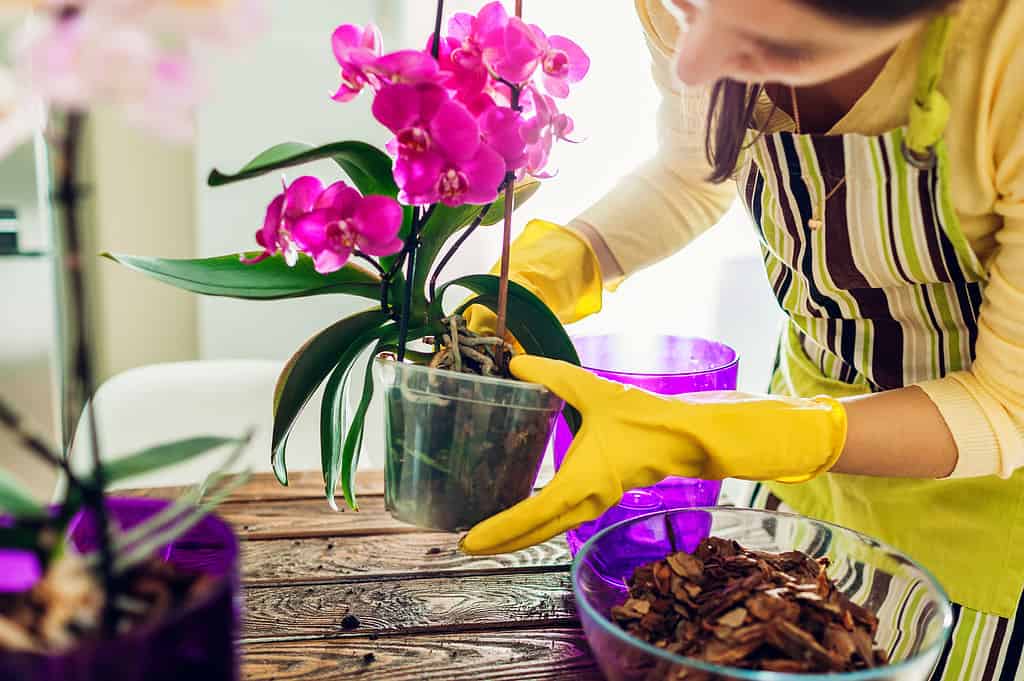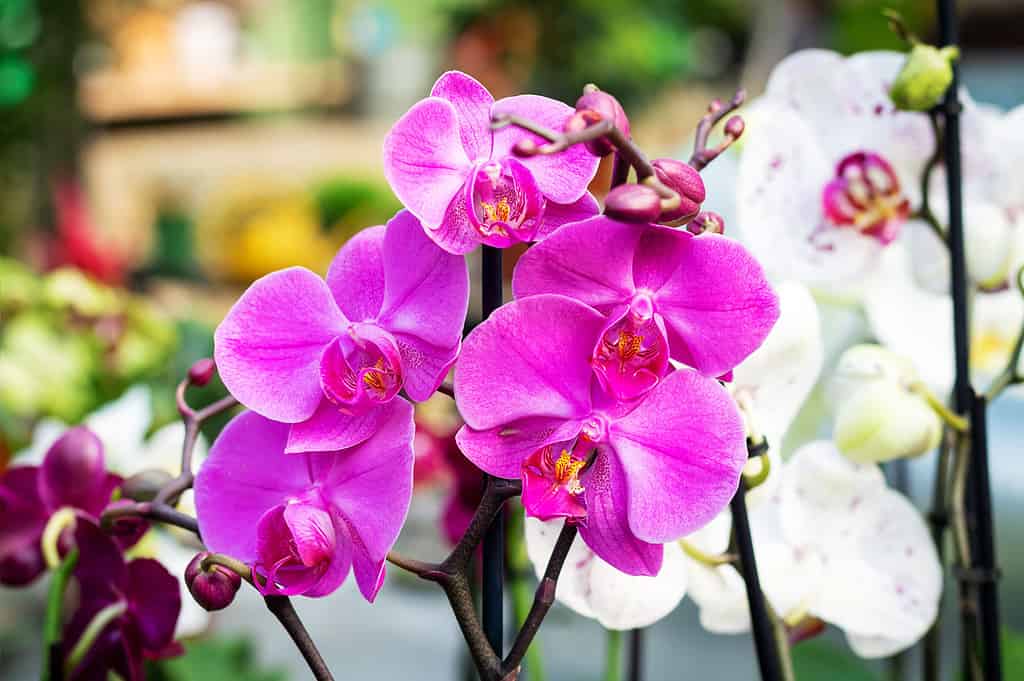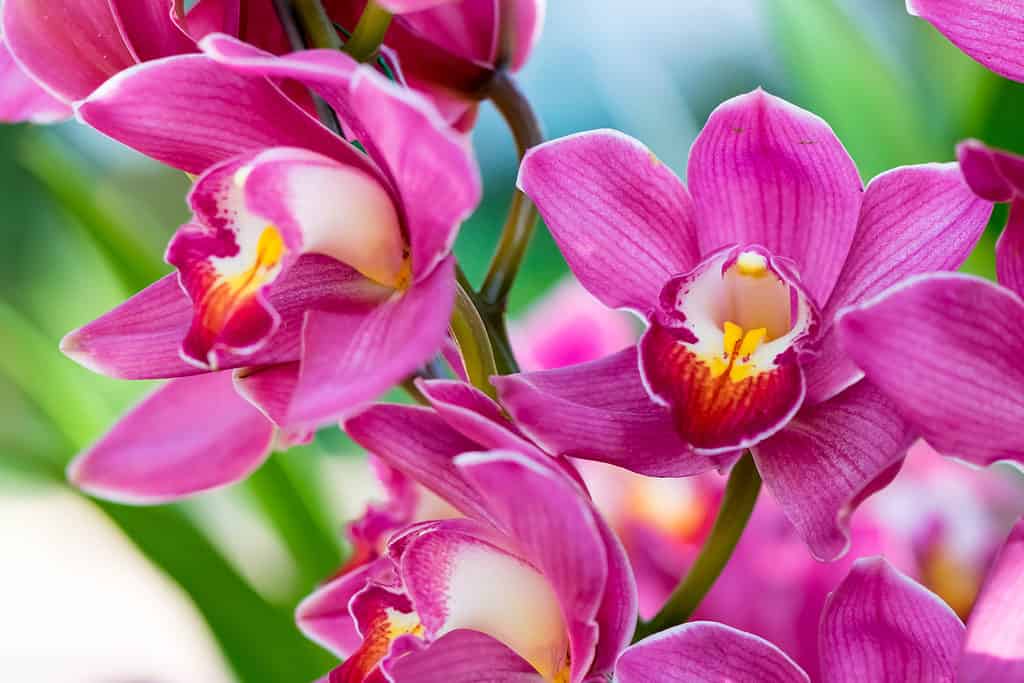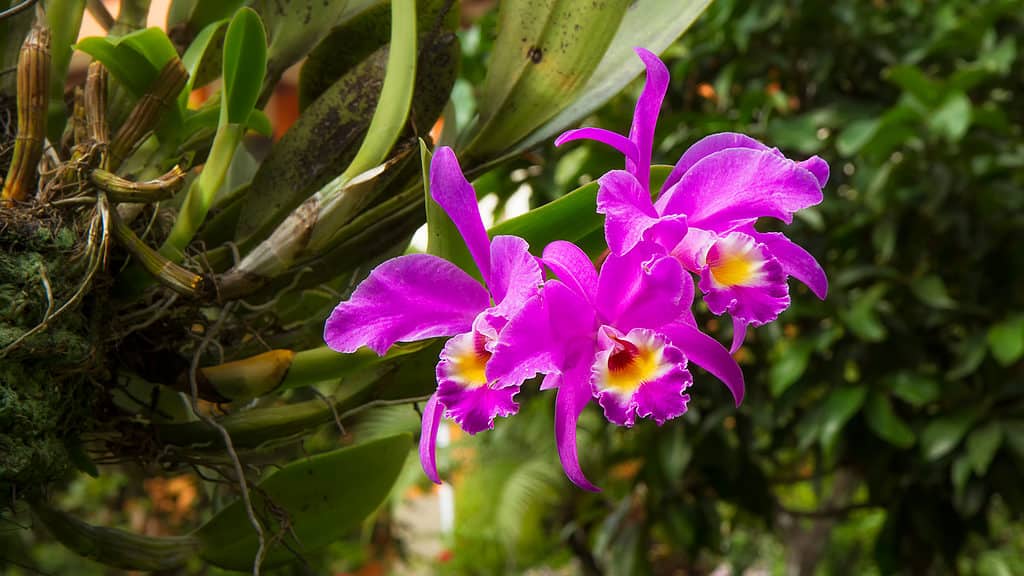Orchids are beautiful, elegant flowers that come in a wide variety of colors. They can be popular houseplants, either for your own home or to gift to others. However, as beautiful as they are, orchids are also known for being notoriously difficult to care for. There are several different ways that you can provide the right care for your orchid, increasing the likelihood of long-living, successful blooms. However, soil is likely one of the most important components. Below, discover the best soil for orchids, plus learn some additional critical care tips.
Best Soil for Orchids

An orchid needs soil that provides plenty of airflow and drainage.
©iStock.com/Maryviolet
Orchids are a unique type of flower. Typically, when you think of flowers and where they grow, you’ll think of soil or the ground. However, this isn’t exactly true for orchids. Rather than growing in the soil of the ground, in the wild, orchids actually grow in trees or on rocks.
They are what is known as epiphytes. This means that rather than getting their nutrients from the soil, these plants attach to vertical surfaces, like trees, and get their nutrients from other means. For example, in the crook of a tree, leaf litter and similar natural debris can get caught and break down. Over time, this creates an organic mulch that can provide the essentials for orchids.
Because of this, regular potting soil isn’t the best option for your orchid. Instead, the best soil for orchids tends to be those that pair draining with aeration. In the wild, because they are epiphytes, orchids often have their roots exposed to the elements, such as the rain or wind. As a result, you’ll want to replicate this by giving them soil that doesn’t hold water and allows plenty of airflow.
Some of the best components for soil for orchids include:
- Bark
- Perlite
- Coarse sand
- Husks
- Sphagnum moss
- Charcoal.
Orchid Care Tips

There are several factors and tips to keep in mind in order to help your orchids thrive.
©iStock.com/Dmitriy Sidor
Choosing the best soil for orchids is only one step in ensuring healthy, thriving plants. There are various other conditions that are needed for beautiful, striking plants that produce a bounty of flowers. Plus, with a possible lifespan of up to 15 years, taking the right care of your orchid can help you to best enjoy its beautiful blooms year after year.
As a result, now that you know more about the right soil type and components for your orchid plant, learn more about additional care tips.
Keep Watering in Mind

Orchids require proper drainage during watering to help protect their roots.
©Sealstep/Shutterstock.com
In the wild, much of the rain that orchids get comes from the atmosphere or rain. Because they are not rooted into the ground and often have their roots exposed, there is nowhere for water to pool around them. As a result, it is important to provide enough water for the orchid without overwatering, which can damage the plant and even cause mold or illness.
Instead, around once per week, you’ll want to actually remove your orchid from where you have it. Then, instead of pouring water directly on your orchid in its pot or growing location, you’ll want to water your orchid at the sink. Lukewarm water is key. You’ll want to gently run water over the roots of your orchid, then pull it away. This gives it a moment for the water to absorb. Then, repeat the process once more, making sure that your orchid is thoroughly watered but not soggy. The roots often change color when they have received the right amount of water, often becoming a pale white or green color.
If you are returning your orchid to a pot after watering, make sure that all excess water has completely drained off and that the pot has proper drainage and airflow. This can help prevent any standing water that can be harmful to your orchid.
Prioritize the Right Amount of Light

Receiving too much or too little sunlight can affect your orchid’s growth and leaves.
©Ibenk_88/Shutterstock.com
If there are only three factors to truly stress when it comes to taking care of your orchid, it is soil, water, and light. Other facts, such as fertilizer and pruning, are important, but these three factors are essential to your plant’s healthy growth.
Orchids need indirect light. The best way to tell if your orchid is getting enough light is by looking at the leaves. With optimal conditions, your orchid will sport healthy, bright green leaves. In too much light, the leaves may take on a sunburnt appearance, becoming pink or red at the edges. In too little light, the leaves will be dark green.
Texture can also be an indicator, especially if your plant is not getting enough sunlight each day. In this case, the leaves may be dark green and stiff.
The photo featured at the top of this post is © Esa Hartadi/Shutterstock.com
Thank you for reading! Have some feedback for us? Contact the AZ Animals editorial team.







